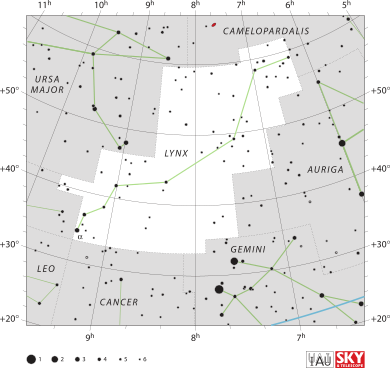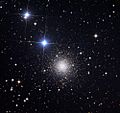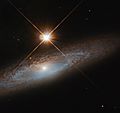Lynx (constellation) facts for kids
| Constellation | |

List of stars in Lynx
|
|
| Abbreviation | Lyn |
|---|---|
| Genitive | Lyncis |
| Pronunciation | genitive |
| Symbolism | the Lynx |
| Right ascension | 8 |
| Declination | +45 |
| Quadrant | NQ2 |
| Area | 545 sq. deg. (28th) |
| Main stars | 4 |
| Bayer/Flamsteed stars |
42 |
| Stars with planets | 5 |
| Stars brighter than 3.00m | 0 |
| Stars within 10.00 pc (32.62 ly) | 1 |
| Brightest star | α Lyn (3.14m) |
| Messier objects | 0 |
| Meteor showers | ????? ????? |
| Bordering constellations |
Ursa Major Camelopardalis Auriga Gemini Cancer Leo (corner) Leo Minor |
| Visible at latitudes between +90° and −55°. Best visible at 21:00 (9 p.m.) during the month of March. |
|
The Lynx is a constellation found in the northern part of the night sky. It's like a picture made by connecting stars, but it's not one of the really bright or famous ones. This constellation was created by a Dutch astronomer named Johannes Hevelius in the late 1600s. He named it Lynx because its stars are quite faint, and you need good eyesight, like a lynx, to spot them!
Contents
About the Lynx Constellation
The Lynx constellation is located between some well-known star groups. It sits near Ursa Major (the Great Bear), Auriga (the Charioteer), and Gemini (the Twins). Because its stars are not very bright, it can be a bit tricky to find.
Finding Lynx in the Sky
To find Lynx, you usually look for the brighter constellations around it. It's best seen in the Northern Hemisphere during the winter and spring months. You can often spot it by looking between the "Big Dipper" (part of Ursa Major) and the bright stars of Gemini.
Stars of Lynx
Lynx doesn't have any super bright stars. Its brightest star is called Alpha Lyncis. It's a giant star that shines with a reddish-orange color. Even though it's the brightest, it's still not easy to see without a dark sky.
One interesting star in Lynx is LHS 1963. This star is quite close to our own Solar System. It's about 26.6 light-years away, which is relatively near in space terms!
Deep-Sky Objects in Lynx
Even though Lynx is faint, it contains some fascinating objects that astronomers study. These are called deep-sky objects, and you usually need a telescope to see them.
One notable object is NGC 2419. This is a very old and dense group of stars called a globular cluster. It's sometimes called the "Intergalactic Wanderer" because it's very far away from the center of our Milky Way galaxy.
Another cool object is Galaxy UGC 3855. This is a galaxy far, far away, made up of billions of stars. Telescopes like the Hubble Space Telescope can capture amazing images of such distant galaxies, helping us learn more about the universe.
The Story Behind the Name
Johannes Hevelius, the astronomer who created Lynx, thought the stars in this area were so dim that you would need the sharp eyes of a lynx to see them. A lynx is a wild cat known for its excellent eyesight. So, the constellation got its name because it's a challenge to spot! It doesn't have a long, ancient story like some other constellations, but its name is a nod to the skill needed to find it.
Images for kids
See also
 In Spanish: Lynx (constelación) para niños
In Spanish: Lynx (constelación) para niños



